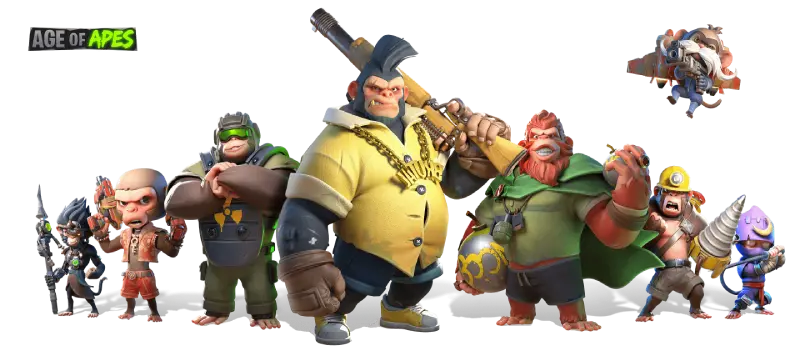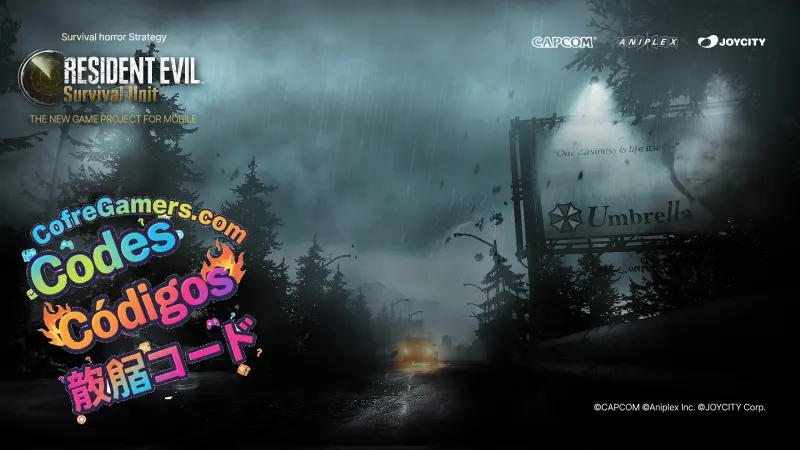Age of Apes Codes – The Complete Rocket-Fuel Guide

How to redeem a code (and why you should do it the second you see one)
Redeeming gift codes in Age of Apes is ridiculously quick once you know the menu path—but being quick matters, because every code is a banana on borrowed time. Here’s the 60-second routine I follow each day:
- Tap your avatar on the main screen. That opens the Profile panel, the nerve-centre for anything account-related.
- Hit Settings → Redeem Code (the label may read Canjear código if your device is in Spanish).
- Paste the code exactly as it appears—no extra spaces, watch the caps—and confirm.
- Open your in-game mailbox. That’s where the goodies land: shiny CDs (premium currency), speed-ups, batteries, crates of iron, you name it.
- Spend them with intent—don’t scatter accelerators on a 12-minute barracks job when your Command Centre upgrade still has ten hours on the clock.
“Tap4Fun releases codes periodically that can be redeemed from the profile or settings menu, offering coins, materials or shiny CDs. These codes expire after a few days but are a useful boost for newcomers.” – personal insight
Two pro tips that save frustration:
- Copy–paste from a notes app; a single typo voids the code.
- If a code pings “invalid”, try deleting the hidden space mobile keyboards like to add at the end.
🎮 Find free codes for the games you love 🎮
| CODES | REWARDS |
|---|---|
PgMkqGrauv
Expires: 12/12/2025 |
Activate this code to access free rewards instantly. |
| CODES | REWARDS |
|---|---|
AOA666
|
Activate this code to access free rewards instantly. |
Reap the loot: squeezing maximum value out of every drop
Age of Apes, developed by Tap4Fun (Nibiru Tech), “presents a post-apocalyptic universe where apes have become the dominant species and compete to launch rockets into space. The game blends base building, resource management, tech research and strategic combat, all wrapped in a surprisingly polished, vibrant art style.” Those flashy colours mask a seriously deep economy, so every code you redeem should be treated as high-octane fuel for long-term momentum.
Shiny CDs
- The one currency that bends time. Hoard at least 1 000 for base panic-button moments: surprise PvP raids, alliance war rebuilds, last-minute rocket-part bids.
- Stretch their value by waiting until a building timer has <20 % remaining; CDs erase the expensive chunk at the end.
Speed-ups
- Merge the small fries. Five-minute tokens hardly dent a 12-hour lab project, but stack sixty of them and you’ve shaved five hours for free.
- Sync boosters with global events—those score multipliers often hand back half the boosters you spend.
Batteries & basic resources
- Keep batteries for the march-heavy hours of an alliance siege; nothing feels worse than a drained transport line mid-campaign.
- Funnel food and iron straight into the Depot to make them unsackable.
The practical loop I’ve refined:
- Redeem code → open mail → bank big CDs.
- Queue a multi-hour upgrade (lab, headquarters, rocket bay).
- Fire speed-ups only when the timer is in single digits.
- Pop any leftover crates just before logging off so raiders can’t sniff them out.
Fast-track your base without spending a cent
“Although progress takes time—buildings and training can last hours or days—the design favours drop-in sessions that let you advance without living in the game.”
The magic formula is two staggered play rhythms:
- Coffee-break loop (10–15 min)
- Scoop offline resources, launch two cheap tech projects, set troops to farm nearby ruins.
- Work-day loop (6–8 h)
- Start a hardcore upgrade—Command Centre, Observatory, Rocket Module.
- Queue mass troop training.
- Send alliance expeditions deep into the map so no one can sniff your caravan trail.
Follow that and you’ll climb from HQ 12 to HQ 20 in a fortnight without micro-transactions. Priority path:
- Command Centre first—every plateau you push here unlocks a bigger set of buildings.
- Resource generators to cap; free flow of food beats any single gift-code windfall.
- Depot upgrades slash loot losses by over half.
- Speed-ups strictly for Command Centre and Rocket Bay: they’re win-conditions, not vanity projects.
Codes fill the resource potholes and keep you ahead of the dreaded LVL-16 wall where many players stall.
Life in the horde: the social engine that powers everything
“What’s most striking is its community system: belonging to an ape horde, cooperating with allies, planning attacks on rival clans and seizing territory creates a solid, motivating social dynamic.”
Key roles inside any top-tier horde
| Role | Why it matters |
|---|---|
| Governor | Sets daily objectives, drops the rally signal, directs upgrades. |
| General | Leads 25-player rallies—their attack buffs spread to everyone. |
| Engineer | Coordinates mega-structures and lays the protective wall grid. |
How we win territory wars
- Server-reset scouting: at 04:00 UTC every empty warehouse is tagged for strike.
- Triple-fork rally: main column at the gate, side columns shred supply lines.
- Hospital shuffle: hide wounded troops in an ally city during the retreat—30 % fewer losses.
The banter of pineapple-throwing chimp GIFs hides a harsh fact: ownership of every square kilometre pumps out the radioactive mineral you need for the rocket. The first horde to finish their rocket triggers a cinematic and—more importantly—bags an extra 1 000 shiny CDs for every member.
Breaking the resource wall before it breaks you
“Some critics note that the pace can turn repetitive, with many similar tasks and a slower climb if you don’t spend money or dive hard into PvP.” I hit that wall round HQ 18; here’s what shoved me through:
- Queue rotation – never let the four queues (building, research, training, command) idle at the same time; switch to cheap tech when resources are thin.
- Event piggy-backing – the Banana Derby event throws 50 speed-ups at anyone who stacks three building levels in a day; schedule upgrades to overlap with it.
- Black Market flips – check the merchant every six hours; trading surplus iron for food at 3:1 beats hitting the grind fields.
Add daily codes on top and the wall becomes a speed bump.
Surviving the PvP “whale splash” without rage-quitting
“The PvP system can favour highly active or spend-heavy players, making it tough to climb without investment.” True, but smart monkeys still steal bananas from gorillas:
- Smart Shielding – don’t burn a 24-h bubble after a minor poke; wait until your hospitals are stuffed and your timers are long.
- Onion formation – cheap light units outside, heavy hitters inside: attackers waste ammo chewing through the peel.
- Negotiation beats nukes – a private message and a meme often buys you a non-aggression pact faster than any wall upgrade.
- Resource sniping – raid farms, not cities; you bleed enemies dry without triggering revenge spirals.
When the 5-million-power whales arrive, reverse rally—twenty mid-power players even out raw stats and share repair costs. Cooperation trumps credit cards.
Why codes are the rocket boosters that level the jungle
“Age of Apes impresses with its original setting and strategic spirit. The humorous ‘monkeys versus the world’ vibe gives it personality. Gift codes add that extra shove for those who won’t—or can’t—spend cash, while serious late-game demands consistency or financial commitment.”
I can’t imagine logging in without first checking the alliance chat for the day’s new code, laughing at a banana GIF and watching my shiny CD tally climb. Redeem them fast, treat them as precious fuel, and keep your horde tight. I’ll see you on the launch pad—bring bananas.
Source
🌐 Official Links for Age of Apes
🌍 Official Website
📱 Google Play
🍎 App Store
📘 Official Facebook Page
📸 Official Instagram
▶️ Official YouTube Channel


